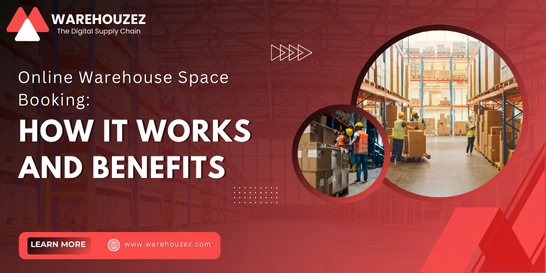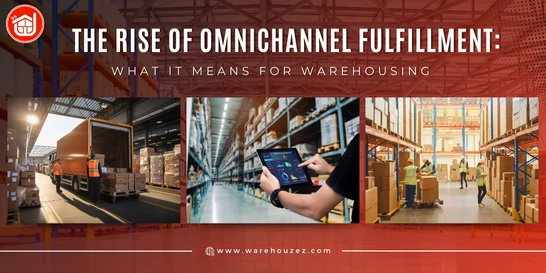Warehouse Safety: Best Practices, Technologies, and Trends
Warehouse Safety: Best Practices, Technologies, and Trends
In today's fast-paced world, warehouses are busy environments to work in with so many moving parts. From heavy machinery to high shelves, the risk of accidents is always present. If warehouse safety isn't made a priority, it can lead to serious consequences. Common hazards include slips, trips, falls, equipment failures, and mishandling of goods. Thus, ensuring a safer work environment is essential for the well-being of your team and the smooth operation of your business.
In this blog post, we will explore the best practices, technologies, and trends that can enhance warehouse safety. So, let's get started!
What Is Warehouse Safety And Why Is It Essential?
Warehouse safety refers to the practices put in place to safeguard workers and inventory in a warehouse facility. It involves creating safe working conditions, following safety protocols, and using proper equipment. Warehouse safety is certainly essential, as it reduces the risk of accidents, injuries, and damage to goods. It also helps prevent costly disruptions, boost worker morale, and ensure compliance with industry regulations. By fostering safety, businesses can maintain smooth SCM operations and protect their employees from harm.
The Best Practices for Warehouse Safety
Here's a look at some of the best practices that promote a secure warehouse environment:
Layout Optimization and Organization -
A well-designed warehouse layout can help reduce risks and increase the overall efficiency. Clear pathways must be marked for both workers and equipment. Shelving and storage areas should be well-organized to avoid clutter and potential hazards. A well-planned layout also reduces the chances of collisions between equipment and personnel. This prevents accidents like slips or falls and ensures that workers can easily access inventory.
Proper Equipment Maintenance -
Maintaining equipment is another prominent safety tip for warehousing companies. Machinery like conveyors, forklifts, and pallet jacks must be inspected thoroughly to ensure they are in good working condition. Broken or faulty equipment can cause accidents, putting workers at risk of serious injuries. Regular maintenance helps identify problems at an early stage, allowing repairs before issues escalate. By keeping equipment in top-notch condition, warehouses can operate smoothly and reduce risks for their workers.
Regular Safety Audits and Inspections -
Another best practice for warehouse companies is to conduct regular safety audits and inspections. This helps identify potential hazards before they lead to accidents. Inspections should cover all areas of the warehouse, including equipment, storage, and workstations. By reviewing safety protocols, businesses can address any weak points in their safety measures. Regular audits not only protect workers but also ensure that the warehouse stays compliant with the security standards.
Use of Personal Protective Equipment (PPE) -
Personal protective equipment (PPE) is indeed important for protecting workers from any hazards in the warehouse. Items like helmets, gloves, protective footwear, and safety vests, should always be worn when handling heavy loads or working in risky areas. Ensuring all employees have access to the proper PPE and are trained on how to use it correctly is imperative for preventing injuries. Enforcing strict rules around PPE use fosters a culture of safety and keeps workers safe from harm.
Emergency Preparedness Plans -
Every warehousing company should have a well-documented emergency preparedness plan. This plan should include procedures for fires, equipment malfunctions, or any medical emergencies. Workers must be trained on how to act in such situations, including how to evacuate the warehouse or administer first aid. Regular drills should be conducted to ensure employees are familiar with the plan. Being well-prepared for emergencies helps minimize injuries and ensures that everyone knows their role when something goes wrong.
Staff Training and Education -
Regular training programs are necessary to make workers understand warehouse safety protocols. Employees should be trained on how to handle equipment, load and unload materials safely, and follow emergency procedures. Ongoing education helps workers stay up-to-date with the industry guidelines and reduces the risk of accidents. By investing in proper training, businesses ensure that their workforce is well-prepared to deal with potential hazards, creating a safer workplace overall.
Technologies For Enhancing Warehouse Safety
Advancements in technology are revolutionizing warehousing operations, offering innovative solutions to improve protection. So, let's now take a look at some technologies that can enhance warehouse safety:
Automation and Robotics -
Automation and robotics are transforming how goods are stored and organized. They reduce the need for manual labor to do risky tasks within warehouses. Rather, robots handle heavy lifting, sorting, picking, packing, and transporting goods. By automating dangerous or repetitive tasks, companies can lower the risk of human error and injuries in the workplace.
Wearable Safety Technology -
Wearable safety devices, such as smart helmets or vests, monitor workers' health and alert them to unsafe conditions. These devices can track vital signs, fatigue levels, and environmental risks, ensuring workers are protected at all times. Wearables can also send automatic alerts to warehouse managers if a worker is in distress for quick responses to emergencies.
Warehouse Management Systems (WMS) -
A Warehouse Management System (WMS) enhances safety by organizing and streamlining warehousing operations. It ensures that inventory is handled efficiently, reducing clutter and minimizing the risk of accidents. WMS software can also track equipment and schedule maintenance so that all machinery is in safe working condition.
Top Trends in Warehouse Safety
Staying updated with the latest trends in warehousing can help businesses promote a safer workplace. Let's take a look at these trends in warehouse management:
The Rise of AI-Powered Safety Solutions -
In today's smart warehouses, AI-powered safety solutions are becoming more popular than ever before. These systems use artificial intelligence to predict and prevent accidents. They do this by analyzing data and identifying potential risks before they translate into serious issues.
Sustainability and Green Warehousing Initiatives -
Sustainable warehousing focuses on eco-friendly practices. Green warehousing initiatives involve using energy-efficient lighting and materials. This not only reduces environmental impact but also creates a healthier and safer workplace for employees.
Data-Driven Safety Decisions -
Data-driven safety decisions involve using analytics to enhance warehouse safety. By analyzing data on day-to-day incidents and operations, warehouses can make informed decisions to improve security measures and reduce risk.
Wrapping Up
Prioritizing warehouse safety is not just about following regulations—it is about protecting workers, equipment, inventory, and business operations. By adopting best practices, embracing new technologies, and staying informed about the latest trends, you can create a more efficient work environment. Investing in safety today will definitely lead to fewer accidents, higher productivity, and long-term success.



